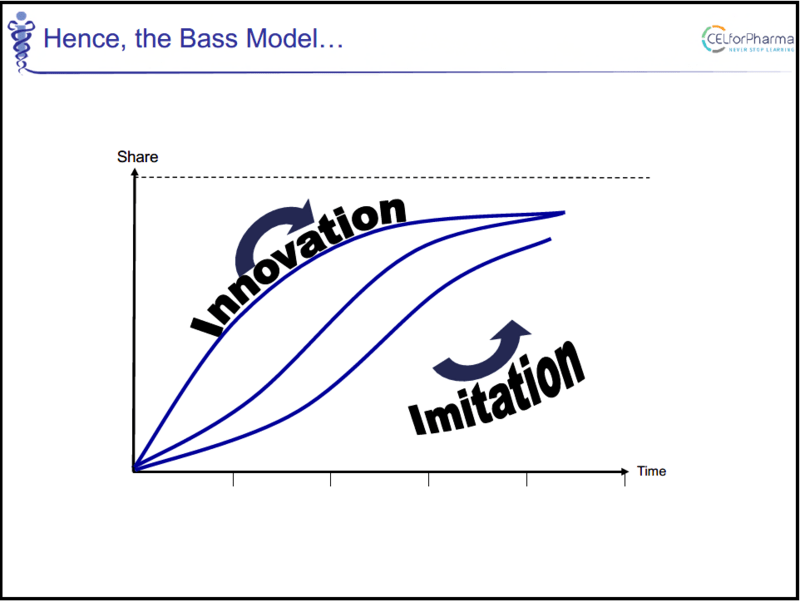By Gary Johnson, expert-trainer of The Pharma Forecasting Course
Thousands of studies by academics have repeatedly come up with a finding that is very important for forecasters: When people are nervous and uncertain, they mostly copy what other people are doing – and this is called “imitation”. Conversely, when people are relaxed and certain, they will take action themselves without reference to what other people are doing – and this is called “innovation”.
So, what makes people nervous and uncertain? The answer is new, relatively untested things. So, this is where it gets confusing. A new, relatively untested technology would be called an “innovation”. And, because it makes people nervous and uncertain, they will adopt it by a process of “imitation”. Whereas, a product that is not very novel (a me-too for example) means that people are relaxed and certain and so will adopt by a process of “innovation”. So innovative products tend to be adopted by imitation and imitative products tend to be adopted by innovation. You can see why people get confused!
The most famous forecasting model for handling the uptake of new products (or therapy classes) is called the Bass Model. It was “invented” by Frank Bass (an academic at Purdue University) in 1969. I say “invented”, but actually, he imitated by repurposing an epidemiology model (one that is a close relative to the one most commonly used today to model the Covid pandemic). The model has three “parameters”. (Parameters are the numbers that give the uptake curve its shape.) When applied to pharmaceuticals, the three parameters have the following meaning:
- The first is the product’s final market share.
- The second is the rate at which people innovate (adopt without reference to other people).
- And the third is the rate at which people imitate (adopt by copying other people).
We might get an estimate of what a product’s final market share will be by using “share models” – and we cover a number of these in CELforPharma's The Pharma Forecasting Course.
Innovation and imitation rates are like yin and yang. As one goes up, the other tends to come down – again, we cover a number of approaches for estimating these in CELforPharma's The Pharma Forecasting Course.
So…
- The uptake of a me-too will be high in innovation with little or no imitation. This is the top curve in the figure below.
- The uptake of a novel high-risk therapy class (perhaps in cardiology) will be high in imitation. This is the bottom curve in the figure below. (There always has to be some innovation or there is no one to imitate.)
- And sometimes, curves fall in between these extremes – again something we cover on the CELforPharma Forecasting course.


